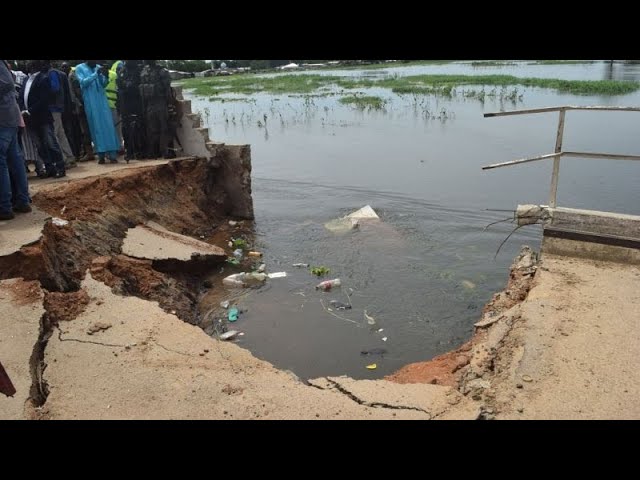Relentless heavy rains have triggered severe flooding in Cameroon’s Far North region, leaving at least 10 people dead and affecting over 200,000 residents, local officials reported Wednesday. The city of Yagoua in Mayo Danay division has been particularly hard hit by the unprecedented downpour.

The flooding has submerged entire neighborhoods, damaged 185 primary schools and 13 high schools, and resulted in the loss of more than 1,100 livestock, according to regional authorities. At least 8,000 homes have been destroyed, forcing thousands to relocate to temporary camps outside the city.
Litassou Daniel, a local flood victim, described the sudden onset of the disaster: “The rain took us by surprise in the middle of the night. Our kitchen utensils are gone—pots disappeared, and our sheep, chickens, and goats are nowhere to be found.”
The floods have also destroyed a crucial bridge connecting Maga to Yagoua, further isolating affected areas. Cameroonian Minister of Urban Development, Célestine Ketcha Courtes, visited the site to assess the damage. “We’ve committed to mobilizing companies next Monday to implement a temporary solution that will reconnect Maga to the rest of the department,” Courtes stated.

In response to the crisis, the government has announced 350 million CFA francs (approximately $580,000 USD) in aid for victims. However, many locals consider this amount insufficient given the scale of the disaster.
Boussate Lydie, a displaced resident, expressed frustration with recurring flood issues: “Every year, we face this same threat from floods. Our situation never improves. We’re given tents to stay in, but they don’t last—once the sun comes, they are ruined.”
The flooding has raised concerns about potential disease outbreaks and food security in the region. Humanitarian organizations are working to provide emergency supplies, but access to affected areas remains challenging, with canoes currently the primary means of transportation in many neighborhoods.

Climate experts warn that such extreme weather events may become more frequent in the region due to climate change, highlighting the need for improved infrastructure and disaster preparedness.
As rescue and relief efforts continue, local authorities are urging residents in low-lying areas to remain vigilant and be prepared to evacuate if necessary. The Cameroonian government has pledged to develop long-term solutions to mitigate future flooding risks, but immediate concerns focus on providing shelter, food, and medical care to those affected by the current crisis.



